League is monitoring new growth and studying how to plant new trees where necessary
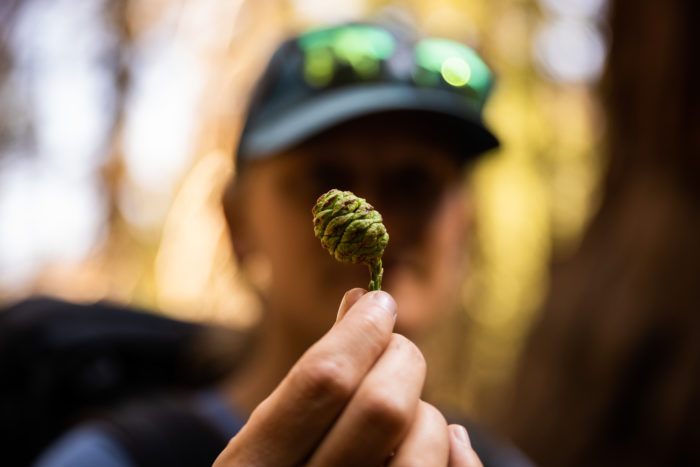
Crews from Save the Redwoods League have been busy in recent weeks at the organization’s Alder Creek property in the Sierra Nevada, further assessing the impacts of the 2020 Castle Fire, monitoring regeneration of the giant sequoia, and studying different ways to nurture the forest’s recovery.
According to Tim Borden, the League’s sequoia restoration and stewardship manager, numerous giant sequoia seedlings are sprouting up in burn scars within the grove, carpeting the ground in certain places with tiny one- and two-inch seedlings.
Giant sequoia have evolved to flourish alongside wildfire. The trees’ cones, called serotinous cones, are adapted to open and release seeds when subjected to certain levels of heat. The mineral soil of a burned area is also particularly hospitable to growth.
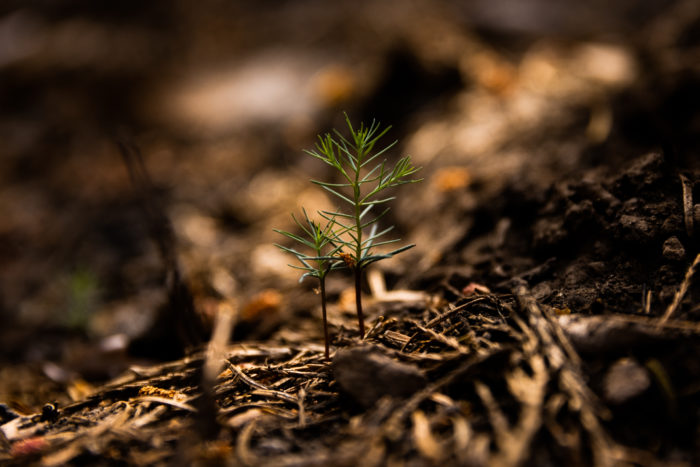
“In certain patches, nature is doing exactly what it’s supposed to do, and you can see these seedlings coming up right where the low- to moderate-fire came through,” Borden said. “And they’re really growing fast, thriving in that soil type.”
He noted that giant sequoia seedlings can be unusually robust following these types of disturbances.
“You might only see an inch above ground, but they’re already laying out a deep root structure,” he said. “That seedling might be two or three times that size under the surface.”
Where the Castle Fire burned at high severity at Alder Creek, the story is different. The fire not only killed dozens of monarch giant sequoia, but it also destroyed cones and seeds, and scorched the soil. As the League has noted before, climate change and decades of misguided fire suppression in the Sierra has created unprecedented conditions that have upset the ecosystem balance that giant sequoia depended on for millennia. Giant sequoia haven’t died like this in modern memory.
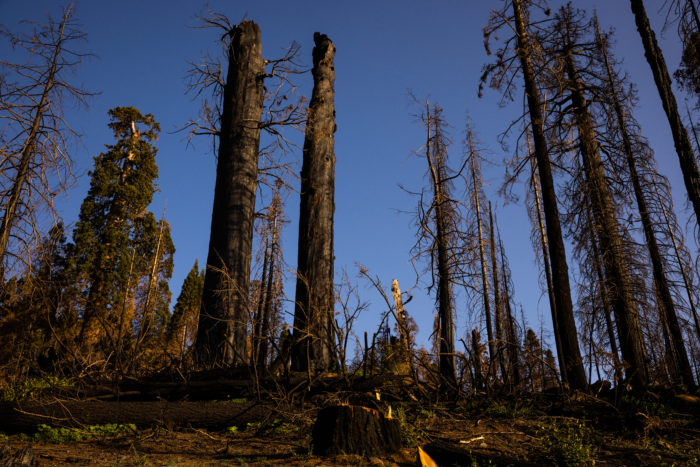
This sad outcome is prompting the League to explore how we might help the giant sequoia forest at Alder Creek, and elsewhere, recover from this wildfire event. One of the first studies we’re conducting is to see how well seedlings survive in the severely burned area. In the study, seedlings were planted in four cardinal directions from each of 11 dead trees to assess how well they do under various conditions, such as sun exposure. This study is being led by Robert York, an adjunct associate professor of forestry at U.C. Berkeley.
York and his team have planted 252 seedlings from nearby Mountain Home grove in an area on the south side of Alder Creek that burned particularly hot in the Castle Fire. Continued monitoring of these seedlings will give some indication of how well restoration planting might succeed.
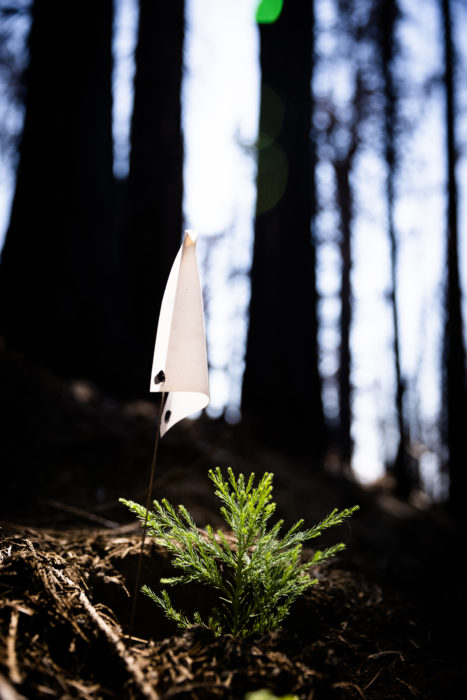
Borden said that understanding how to help this forest recover is important if we want to ensure that the grove doesn’t convert to other kinds of trees.
“While the previous owners of this property cut down several giant sequoia, they primarily logged other tree species—such as sugar pine—which resulted in a thick understory of young white fir and incense cedar that restricted new giant sequoia growth in the last few decades,” Borden said. “And it was this understory, thanks to years of fire suppression, that burned so hot in the Castle Fire.”
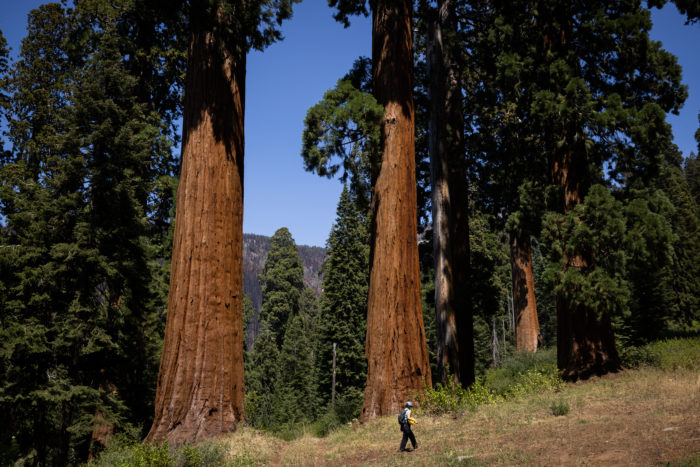
Ultimately, Borden said, the goal is to get the forest to a point where these tree species can prosper together in a changing climate.
“Because this type of high-severity fire is so unprecedented, we still have a lot to learn,” he said. “These on-the-ground studies will help us put this ecosystem on a strong path to recovery.”

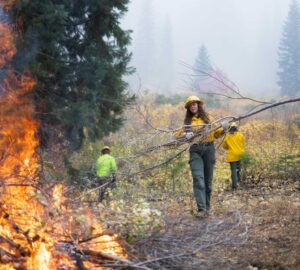
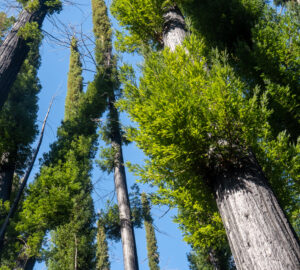
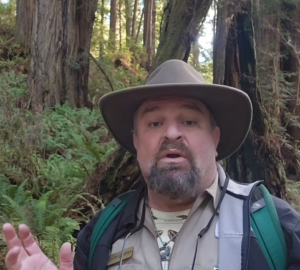
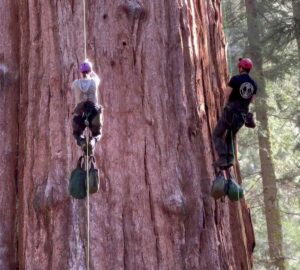

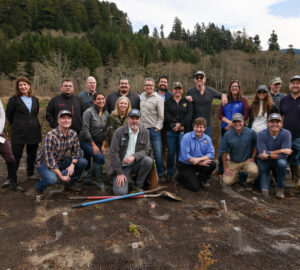
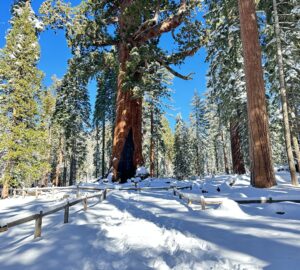
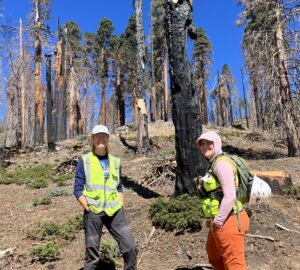
2 Responses to “Nurturing the recovery of Alder Creek’s giant sequoia after the Castle Fire”
Fred M Cain
I hope the League will permit me to offer some unsolicited advice on tree planting. Although I live in the Upper Midwest, I have some hands-on experience in planting tree seedlings on my property (including giant Sequoia, actually).
What I have learned the hard way is that it is absolutely critical to water the seedlings during their first summer. Then, if it gets really dry, it might even be necessary to water them the second summer.
This is partly due to the fact that any transplanted seedling is going to suffer from a certain amount of transplant shock along with an undeveloped root system and then if the weather gets dry, too, it’s just too much. It is going to die.
Even in northern Indiana, it just plain gets a little bit too hot and too dry for small seedlings to survive the summer. I can’t imagine how it would be in the drylands of the Southwest. The U.S. Forest Service has planted millions of small seedlings in high intensity burn areas in Arizona and New Mexico and most of those plantings have failed.
The reason in my personal, honest and humble opinion: No water.
In remote areas it is almost certainly impractical to water transplanted seedlings. For one thing, how would we get the water back to them?
However, much of the Alder Creek grove is accessible. Water could be brought in in small tanker trucks then carried further in using 5 gallon buckets.
Another neat I idea which I have gleaned over the years, is to put small circular fences of woven wire around seedlings about 24-36” high . This keeps rodents, rabbits and deer from eating your seedlings. Rabbits can be just about the worst.
Don’t know if this advice helps or not. If transportation weren’t so much of a problem for me, I’d love to come out and help.
Regards,
Fred M. Cain
Topeka, IN
Lynda
I’m curious about the photo of the redwood cone. This is very small for a Giant Sequoia and looks more like a Sequoia sempervirens cone? Is it because it was immature that it’s so small?